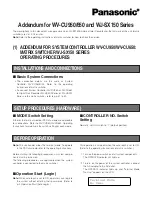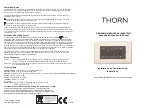
1-3
Basic Concepts of NQA
Test group
Before performing an NQA test, you need to create an NQA test group, and configure NQA test
parameters such as test type, destination address and destination port.
Each test group has an administrator name and operation tag, which can uniquely define a test group.
Test and probe
After an NQA test is started, one test is performed at a regular interval and you can set the interval as
needed.
One NQA test involves multiple consecutive probes and you can set the number of the probes.
Only one probe can be made in one voice test.
In different test types, probe has different meanings:
z
For a TCP or DLSw test, one probe means one connection;
z
For a UDP jitter or a voice test, multiple packets are sent successively in one probe, and the
number of packets sent in one probe depends on the configuration of the
probe packet-number
command;
z
For an FTP, HTTP, DHCP or DNS test, one probe means to carry out a corresponding function;
z
For an ICMP echo or UDP echo test, one packet is sent in one probe;
z
For an SNMP test, three packets are sent in one probe.
NQA client and server
NQA client is the device initiating an NQA test and the NQA test group is created on the NQA client.
NQA server processes the test packets sent from the NQA client, as shown in
Figure 1-2
. The NQA
server makes a response to the request originated by the NQA client by listening to the specified
destination address and port number.
Figure 1-2
Relationship between the NQA client and NQA server
In most NQA tests, you only need to configure the NQA client; while in TCP, UDP echo, UDP jitter, and
voice tests, you must configure the NQA server.
You can create multiple TCP or UDP listening services on the NQA server, with each listening service
corresponding to a specified destination address and port number. The IP address and port number
specified for a listening service on the server must be consistent with those on the client and must be
different from those of an existing listening service.
Summary of Contents for S7906E - Switch
Page 82: ...1 4 DeviceA interface tunnel 1 DeviceA Tunnel1 service loopback group 1...
Page 200: ...1 11 DeviceB display vlan dynamic No dynamic vlans exist...
Page 598: ...ii...
Page 1757: ...4 9...
Page 1770: ...6 4...
Page 2017: ...2 11 Figure 2 3 SFTP client interface...
Page 2238: ...1 16 DeviceA cfd linktrace service instance 1 mep 1001 target mep 4002...
















































